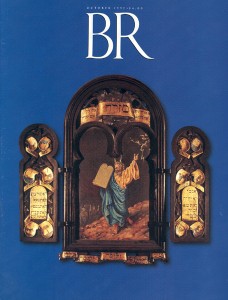That Ol’ Time Religion
American folk artists depict apocalyptic texts

Down dusty rural roads and in inner-city housing projects, American folk art has always flourished. Folk artists may be teenagers just beginning their lives, or they may be octogenarians who knew grandparents emancipated from slavery. Some of them work as janitors in bakeries; some farm the land. One, a quadriplegic, wields a paintbrush in his mouth, and another weaves miniature tapestries from threads of unraveled socks while serving time. These artists are as diverse as American society, yet some of their creations have certain themes in common: the struggle against social injustice, the trauma of drugs and alcohol, and a passionate religious conviction rooted in the Bible.
Though each folk artist is unique, as a group they usually lack formal artistic instruction. They tell their stories with highly individual visual languages invented from unfettered imaginations. Their creations may be mud on plywood or sculptured garbage—but their pioneering spirits impel them to weave tales in ways that are immediately accessible to the rest of us. Their highly personal expression—known in the United States as “folk art” or “visionary art” and in Europe as “art brut” or “naive art”—is found in virtually every culture.
Already a library member? Log in here.
Institution user? Log in with your IP address.

